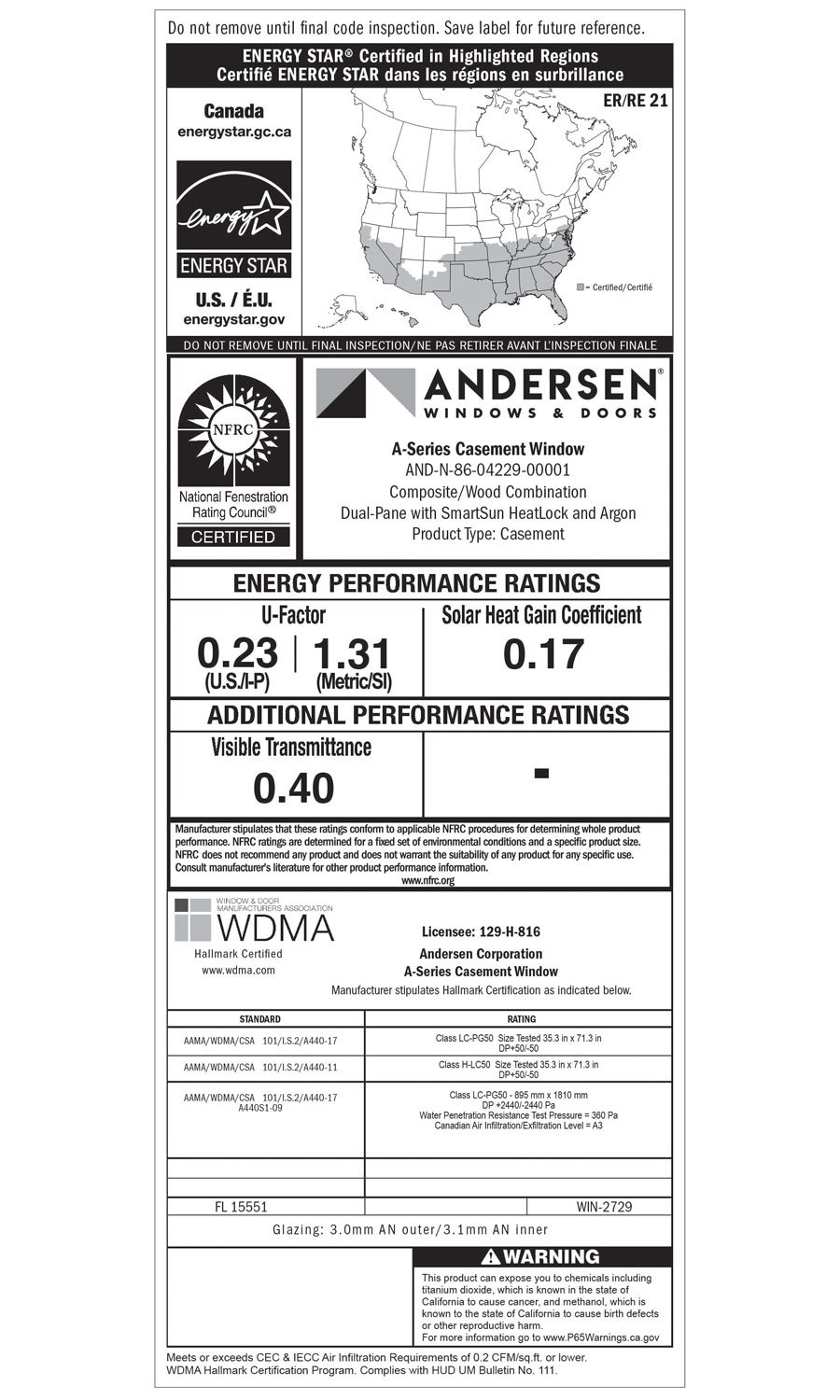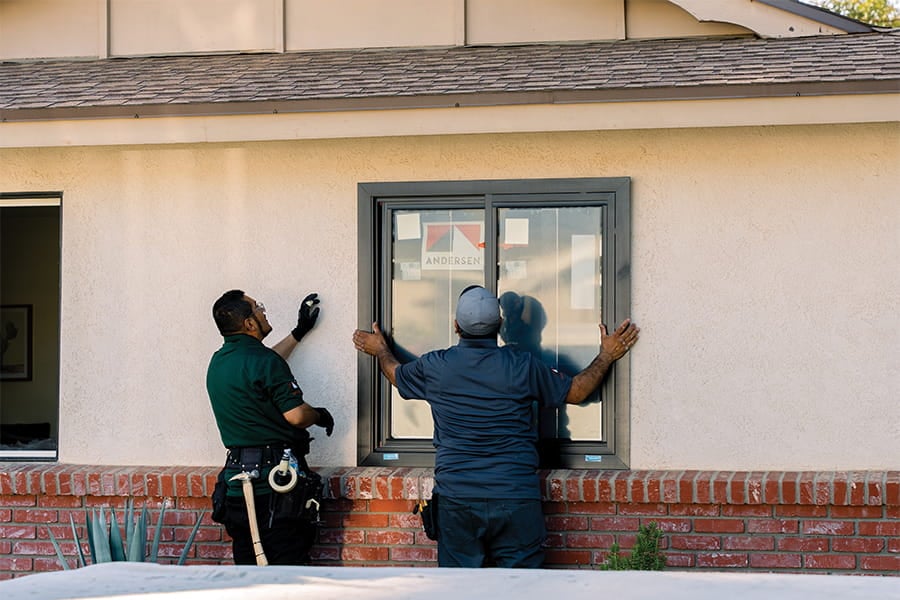By Randy Williams
Window performance labels

Back when I was starting out as a general contractor, I relied on the salesperson at my lumberyard to determine the window performance level needed. After all, a window is a window, right? Well, as it turns out, no. There are a lot of window selections that should be made based on the location of the project and specific goals of the home. For instance, if you live in a cold climate, you may want to choose a window with more solar heat gain and a lower U-Factor. If you live in a hot climate, less solar gain may be needed.
All this information, and more will be listed on the certification label that’s placed on the window before it leaves the factory. That label is unique to the window configuration and includes performance information specific to its type (casement, double-hung, picture, etc.), materials, glass coatings, and other features. I’ll explain how to put that data to good use but first, a little background.
Where does the data on the label come from?
Andersen® windows and patio doors are National Fenestration Ratings Council (NFRC) certified. This independent, non-profit industry organization establishes objective window, door, and skylight energy performance ratings to help homeowners, builders, architects, and others making purchasing decisions. Windows and doors that are NFRC certified have been tested by an independent, third-party testing lab and the information gathered during testing includes the following:
- U-Factor
- Solar Heat Gain Coefficient (SHGC)
- Visible transmittance
- Air infiltration

U-Factor

Solar Heat Gain Coefficient (SHGC)

Visible transmittance
Air infiltration
What else is listed on the label?
Other information that will be listed on a window label includes: the manufacturer's name, window model, materials used, number of panes, glass coatings, and any gas fill used in between the panes. If a window meets the requirements of any energy certification programs, such as ENERGY STAR®, that may also be listed. Visit the ENERGY STAR website for information about certification requirements in your climate zone.
Choosing a window based on how it will perform in your climate will yield better results for your project and understanding the performance metrics available will help you make the right window choice.
